Written by Scott Wilson
Outside the AI industry, there’s not a lot of recognition that the kind of machine intelligence that most people think of is not really the kind of system that most companies are working on today. It’s all just AI to them.
But to experts in artificial intelligence, there is a great divide in the world of thinking machines.
Narrow artificial intelligence describes the task-specific, focused applications of machine intelligence that don’t lead to more general reasoning abilities. Even the most impressive marketing recommendation system or chatbot isn’t going to be able to solve a jigsaw puzzle or learn how to perform linear algebra. They can learn, but only within a narrow window.
General artificial intelligence (AGI), on the other hand, is expected to be able to tackle any task of intellect that a human could attempt… and more. It reflects intelligence in the more human sense of the word, as a sort of innate quality that can be applied to any subject to reason and solve problems through thought.





There is a lot of money and effort going into both paths to the future of AI. AI engineers and researchers starting out in the field today have a choice to make: pursue a career in narrow or general AI?
Why Is There a Difference in Strong and Narrow AI Careers?
 In the early years of artificial intelligence, the dawn of the Dartmouth Conference, there was no real distinction between strong and narrow AI. Researchers and theorists envisioned a linear path to building machine intelligence, progressing from child-like to full human ability, to superhuman intellect.
In the early years of artificial intelligence, the dawn of the Dartmouth Conference, there was no real distinction between strong and narrow AI. Researchers and theorists envisioned a linear path to building machine intelligence, progressing from child-like to full human ability, to superhuman intellect.
Turning computational power into reasoning ability turns out to be more challenging than early theorists may have imagined.
But decades of real-world experience have shattered that idea.
Instead, AI tools and techniques have mostly surged through channels of progress that offer impressive, but limited scope. Machine learning algorithms can be taught to play games or paint pictures or carry on conversations on par with or even better than humans. Working from vast amounts of data, they absorb more information and discern more from it than any person could.
That kind of power, even with narrow applications, still comes with enormous value. So more and more research and development has gone into pursuing better and faster machine learning systems aimed at specific tasks. AGI research, on the other hand, has not found as much favor in the world of commerce.
From Some Perspectives, Both Kinds of AI R&D Are Heading toward the Same Goal
 There’s still a certain school of thought that AGI will emerge naturally from narrow AI as it becomes more powerful and capable, though. This is the idea that with sufficient amounts of training data and better algorithms, tools like ChatGPT, DALL-E, and Sora may eventually exhibit more general reasoning and logical abilities.
There’s still a certain school of thought that AGI will emerge naturally from narrow AI as it becomes more powerful and capable, though. This is the idea that with sufficient amounts of training data and better algorithms, tools like ChatGPT, DALL-E, and Sora may eventually exhibit more general reasoning and logical abilities.
While each of those tools is enormously impressive, they’re also very clearly a narrow application of artificial intelligence. Yet some researchers believe that they are building blocks toward more general capabilities.
This sort of emergent behavior is hinted at in some experiments. As larger and larger datasets are used to develop Large Language Models (LLMs), those systems can develop unexpected abilities that aren’t seen in smaller versions. For example, arithmetic abilities, unscrambling words, or sensing contextual meaning have all been found to improve. These may at least nod toward AGI-level skills.
Other researchers, though, suggest that these abilities are actually statistical artifacts, rather than genuine boosts in capability. If true, then working on LLMs isn’t a good bet for your AGI career.
The Immediate Applications of Weak AI Are a Strong Attractor to Today’s Funding Sources
Narrow AI is definitely where the money is today. According to the 2023 AI Index Report, the top three industries for private investment in AI were:
- Medical and Healthcare
- Data Management, Processing, Cloud
- Fintech
These are all very focused applications revolving around specialist AI development.
Narrow AI is also where the most exciting breakthroughs are happening. Pushing a needle through fabric is a lot easier than breaking through with a block of wood. Researchers here only have to account for a few variables. They have specific goals to aim at, and can leave out functions their system will never need.
Many companies are hiring in this area right now. The big players, like Google, Microsoft, and Apple all have very specific narrow AI tools they are putting weight behind. And even organizations like OpenAI, with broader goals, are using narrow AI development as a way to develop a toolbox for use in ultimately putting together AGI.
Compensation may be higher on this path, but so is the pressure. While AGI is, in the most generous estimates, likely decades away, engineers in narrow AI are expected to produce results fast. The market is being established in this industry today. Customers are demanding miracles, and AI experts had better deliver… or find work delivering pizza.
How Can You Get the Best Education for Working in Narrow AI?
Because of the surge in demand, this is the area where most AI degrees available today provide the greatest amount of training. A typical Master of Science In Artificial Intelligence, which is the basic qualification for both researchers and engineers in the field, includes a curriculum that revolves around focused machine learning algorithms:
- Deep Learning
- Reinforcement Learning
- Natural Language Processing
- Gradient Descent for Linear Regression
All of these are tools that are in heavy use in the most common kinds of uses for AI right now… computer vision, data science, and LLMs.
There are also easy paths into various industries and specializations with a degree like a Master of Science in Computer Vision. And there are many fields in which even more specific degrees are being taught, such as a Master of Science in Computational Linguistics.
General Artificial Intelligence Jobs Are Harder to Find
 Artificial general intelligence jobs are harder to come by.
Artificial general intelligence jobs are harder to come by.
For the most part, you will find this kind of work in academia or at startups devoted to pushing the envelope in general reasoning abilities. But some of the big tech companies in AI are also funding teams that conduct research in this direction. Amazon, for instance, has an AGI team pushing toward new solutions to hard problems that narrow AI can’t handle. And, of course, companies like OpenAI and DeepMind were specifically founded to work toward AGI.
These kinds of private sector positions working on AGI are much less common than those in narrow AI, however. Most of the research that is happening on AGI, or at least on general research areas that may lead to AGI, is in the academic world.
Academia comes with the freedom to explore big ideas that may not be immediately lucrative. It doesn’t revolve around practical applications that drive funding. Instead, it’s about the kind of basic research that will be essential to crack the hard problems of building silicon machines that think like humans.
AGI Research Doesn’t Always Pay at the Same Levels as Other AI Jobs
 Of course, without that profit motive, it can be harder to find funding for dedicated AGI efforts. Universities have several ways to fund that research, but the upshot is that there are fewer available roles overall—and they are diffused by other responsibilities like teaching and administration.
Of course, without that profit motive, it can be harder to find funding for dedicated AGI efforts. Universities have several ways to fund that research, but the upshot is that there are fewer available roles overall—and they are diffused by other responsibilities like teaching and administration.
Although private sector jobs in AGI research and development can be just as lucrative as weak AI jobs, academic positions have academic salaries. That’s a limiting factor to compensation on this path, although many academics also have consulting opportunities on the side. Of course, people going into this field are rarely doing so for the money.
Having your name in history books is a powerful motivator if you are on the team that opens the secrets to artificial intelligence.
In the positive column is the fact that many colleges and universities have a shortage of qualified AI professors and researchers. So with the right qualifications, it may be easier to land one of those positions.
A Focus on the Basics Is the Best Preparation for AGI Jobs
 While there are plenty of roles for master’s-educated AI engineers and researchers in the world of narrow AI development, the land of AGI demands top thinkers and developers. These are roles where a PhD is pretty well standard, if not absolutely required.
While there are plenty of roles for master’s-educated AI engineers and researchers in the world of narrow AI development, the land of AGI demands top thinkers and developers. These are roles where a PhD is pretty well standard, if not absolutely required.
The nature of the degree also carries weight here. Many advanced studies that would be a shoo-in for various jobs in narrow AI don’t have as much application to AGI. A degree in computer vision, robotics, or natural language processing, won’t get you as far as one that dives more into information and AI theory. A broad exposure to potential paths to computational intelligence, rather than one focused on the flavor of the month, will serve you best here.
Your choice of dissertation topic will be important for landing jobs in AGI.
In a field that is the sharpest part of the cutting edge in AI development, original ideas that can lead to new breakthroughs are prized. A final project that is more about honing existing tools or techniques won’t get you as far.
Finally, the school you attend will matter quite a lot on this path. There are more AI degree programs opening across the country. But there remain a handful of luminaries who have been at the forefront of AI research from the beginning. Reputation is meaningful, and if you are looking for positions either private or academic in AGI research, having one of those names on your sheepskin is a boon. You’re also more likely to be rubbing elbows with the high and mighty minds who are leading this field right now, which is an invaluable networking opportunity.
Either path you choose in artificial intelligence today will have significant opportunities to change the future and earn an impressive living. And you’ll face challenges that will put your education and skill to the test.







